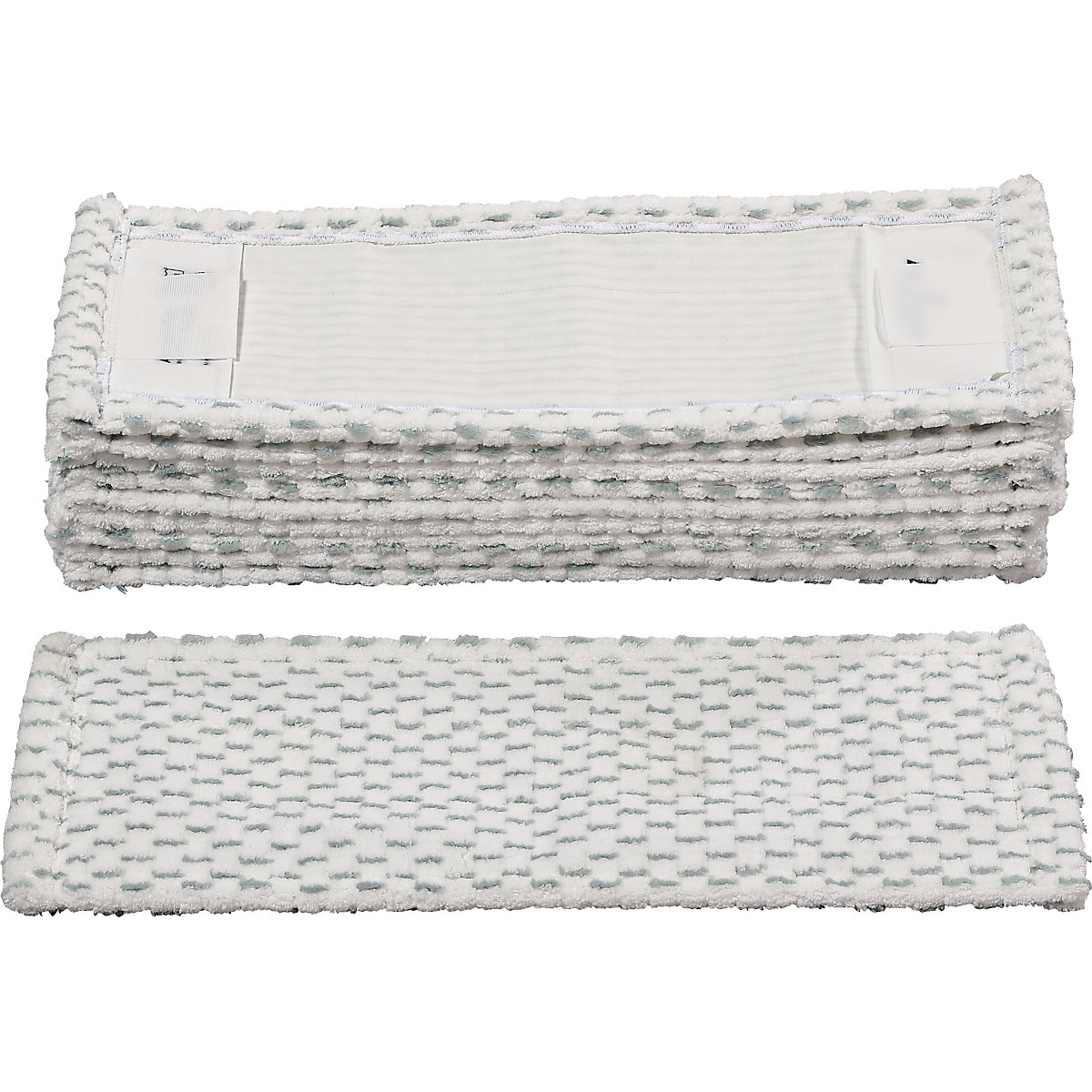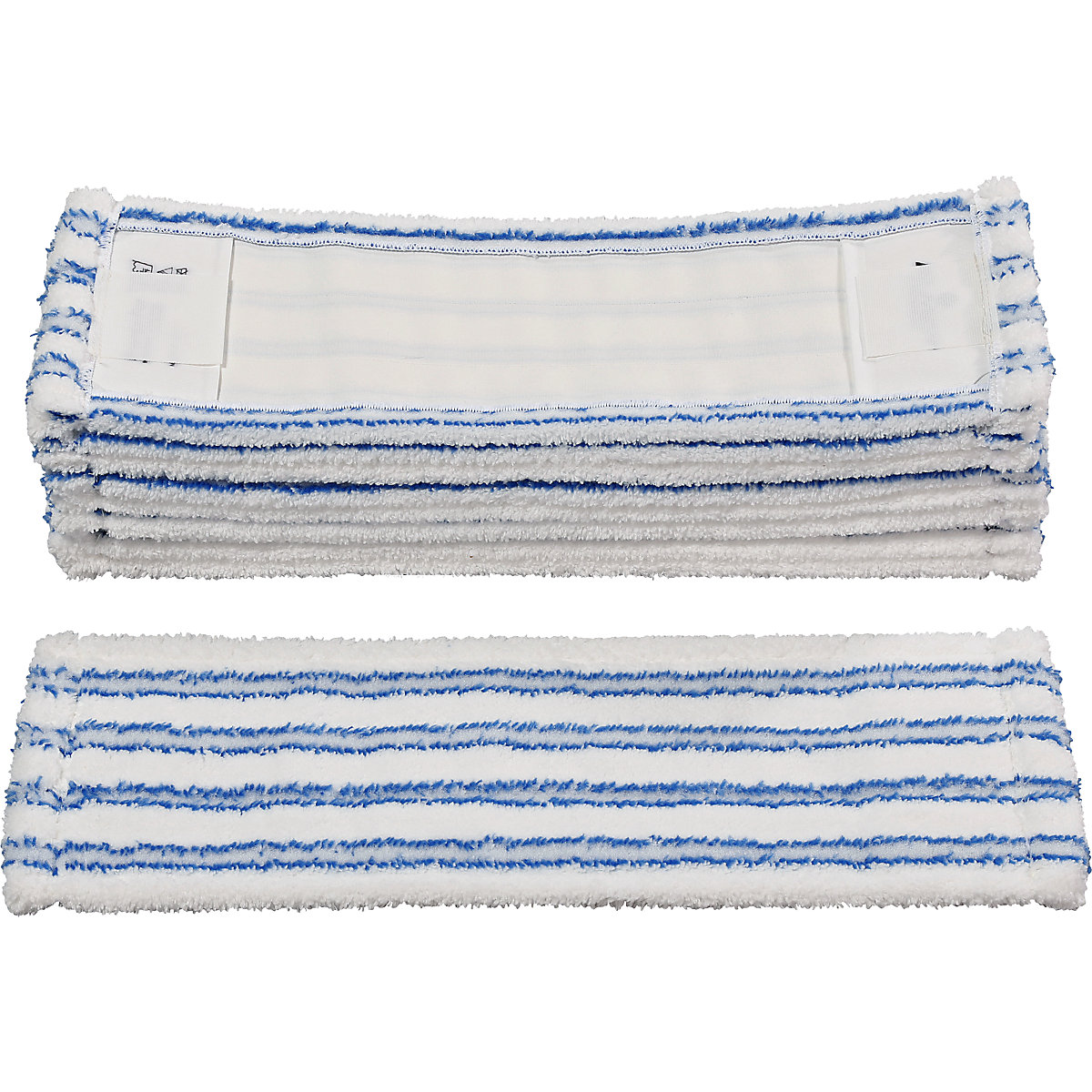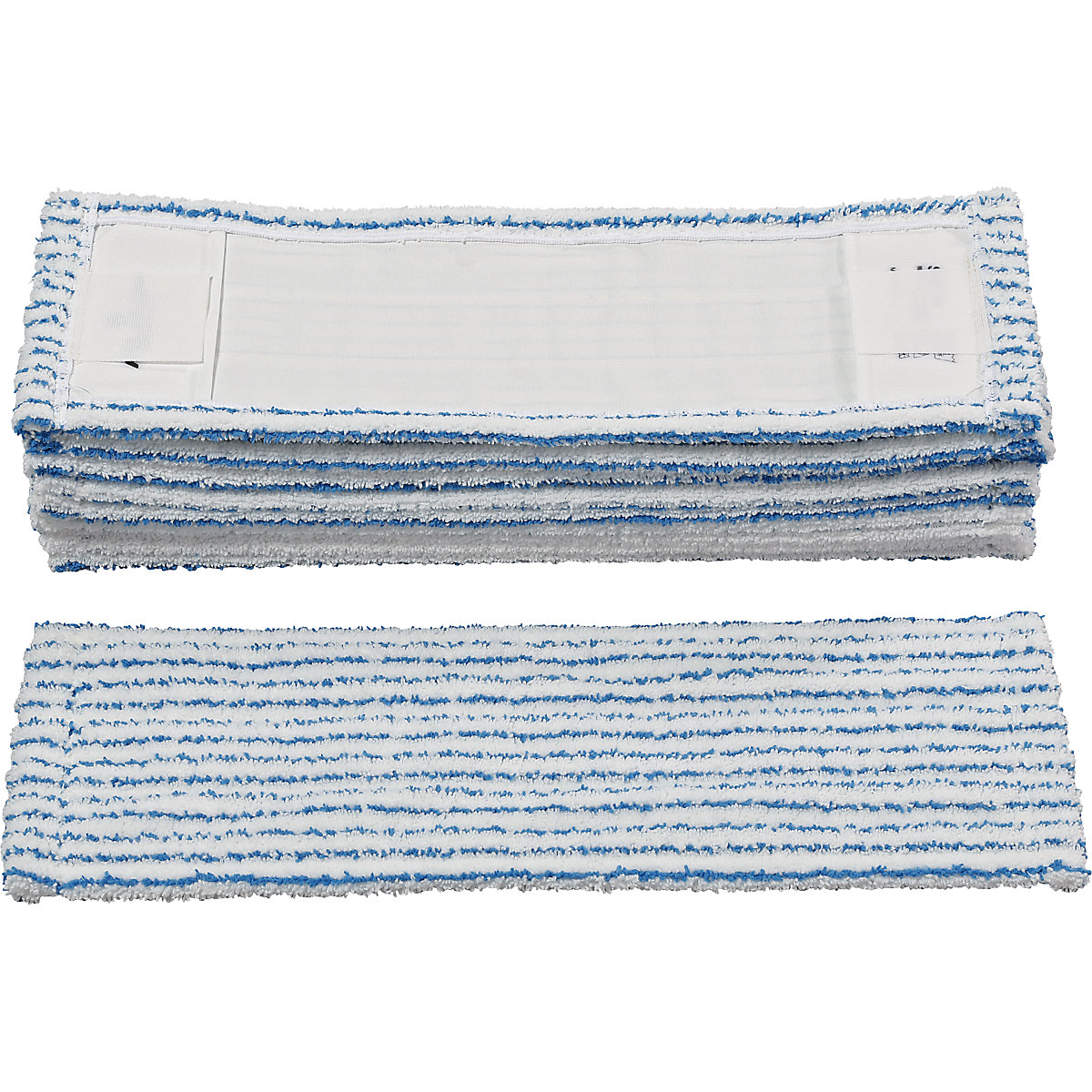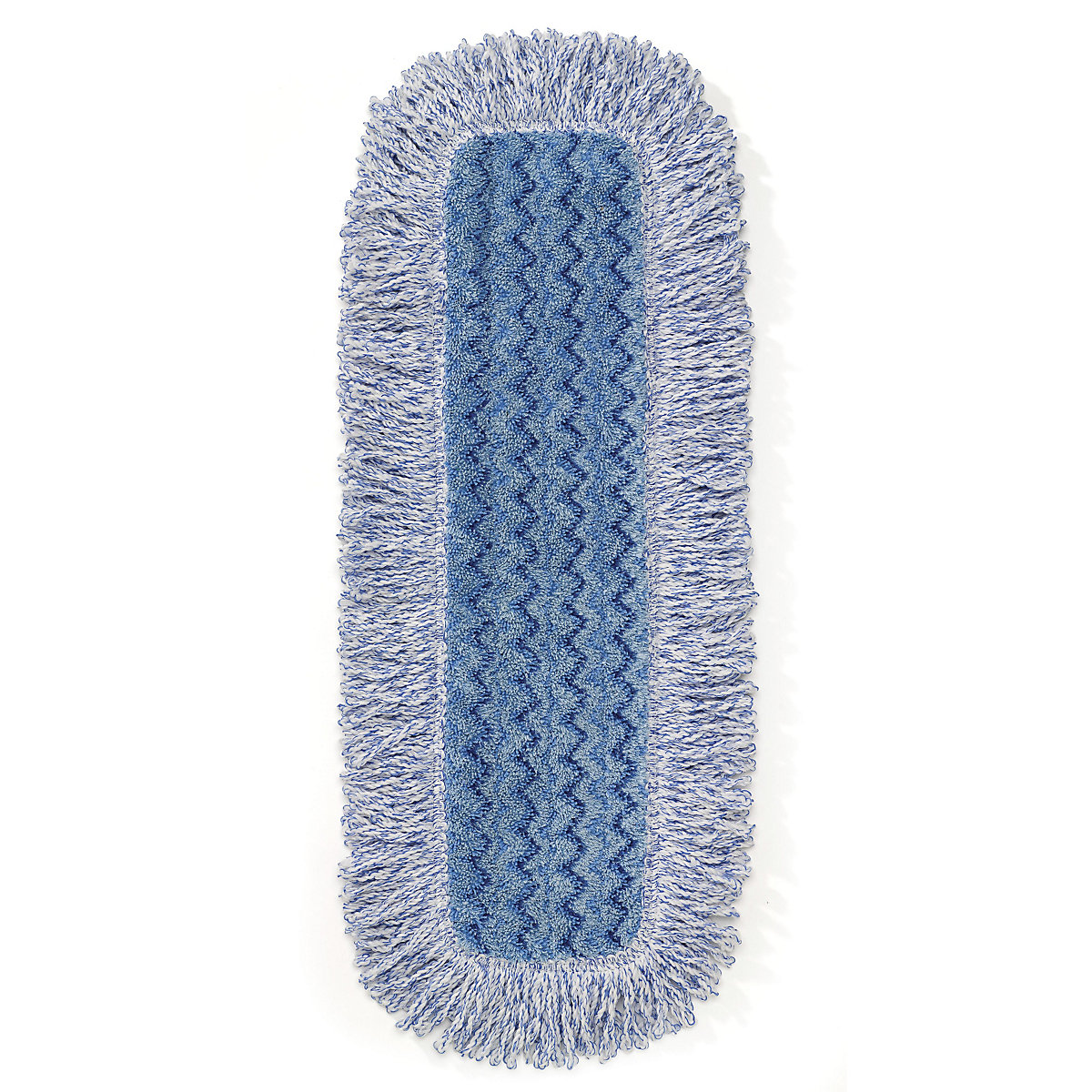Microfibre for cleaning
Microfibres have an average diameter of about 5 - 7 µm and are thus only half as thick as cotton fibres. As a result, microfibres have a significantly greater capacity to remove contaminants, including bacteria, viruses and spores, from cracks and crevices. This makes them ideal for maintaining hygiene and cleanliness in many areas.
Illustration 1: Cotton
Illustration 2: Microfibre
As a further benefit, they offer greater cleaning capacity because the smaller diameter of the threads allows for significantly more individual threads to be used in the same size towel or mop. This is also due in part to the comparatively high number of contact points between the fabric and the surface being cleaned as well as the resulting large quantity of capillaries in the structure of the cloth. With the multitude of gaps created by the structure of the fibres, even more particles of dirt can be absorbed.
Microfibre is generally distinguished for its very good cleaning properties. Due to the structure of the cloth, only a very small amount of cleaning agent needs to be applied. Not only does this have a positive impact on cost control, but rather on environmental protection as well due to improved sustainability. By giving up the use of chemical agents, or by only using very moderate amounts, there is an added benefit of leaving less residue on the surface being cleaned. This can be very beneficial for those who are sensitive to chemicals or suffer from allergies, as it minimises exposure. The good cleaning properties also reduce labour requirements for cleaning staff and minimise the effort required from the individual performing these tasks.
Due to the fact that microfibres can be electrostatically charged through friction during use, these textiles are also ideal for dry dusting.








